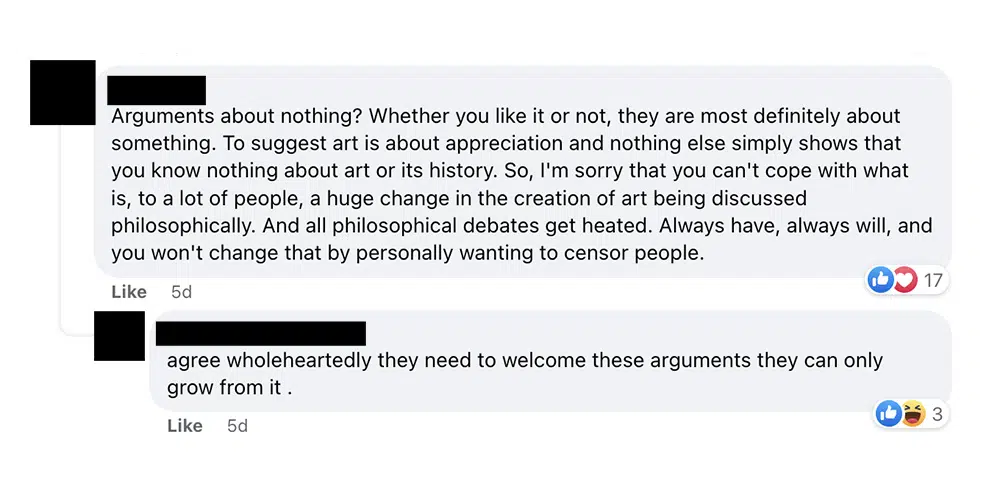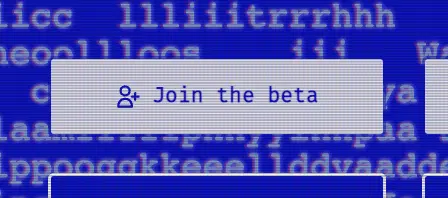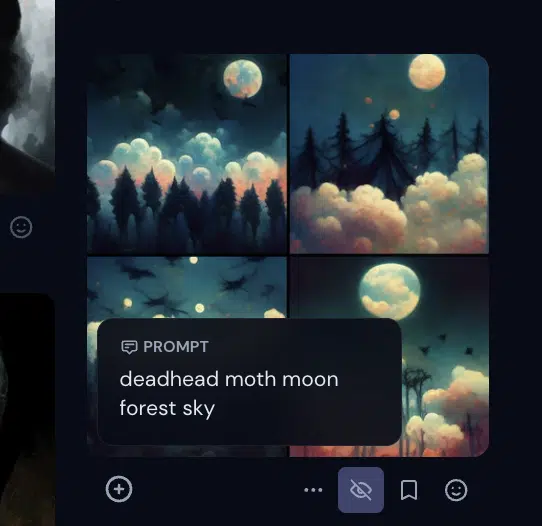AI-generated art and design are everywhere – you can’t miss it. Yet, the concept is still an enigma to the majority of us.
Even those of us who understand the concept and have dug ourselves deep into the recesses of various AI-art generating programs, creating to our heart’s content – we are still mystified.

It is unexplainable and challenging to articulate what exactly we are experiencing as creators and observers of this new technology. One thing we do know is that it is not going anywhere, not anytime soon.
While scrolling, if you have stumbled upon imagery that was unexplainable, otherworldly and you happened to be confused by the utter complex beauty wrapped in something with a hint of terror – welcome to the world of AI-generated art.
First encounters with AI-generated art have typically been through social media channels like Facebook, IG, and TikTok and are met with reactions of both bold elation and pure disgust.
The conversation is loud and can be found on just about any social media platform or message board where AI-generated art is the focus of the conversation. Keyboard vigilantes have jumped on this train to have their say and they are not doing it quietly.
Love it. Hate it.
The good news is that AI-generated art is here to stay.
The bad news is that AI-generated art is here to stay.
- See our beginner’s guide to ChatGPT for creatives.
What is AI-Generated Art?
AI-generated art is not an enigma once you can understand the concept, let us explain. AI-generated art is artwork that is created by applications like Midjourney, Nightcafe, OpenAI’s DALL-E, and Stable Diffusion which are run by machine learning.
What is Machine Learning?
Machine Learning (ML) is a type of Artificial Intelligence (AI) that uses computer systems to learn and adapt by using algorithms and statistical models to analyze and draw inferences from patterns in data.
Machine Learning as a term was coined in 1959 by Arthur Samuel, an IBM employee, and pioneer in the field of computer gaming and artificial intelligence. It is common for people to perceive Machine Learning as new, but it was rooted in our world over 60 years ago.
Furthermore, AI-generated art might be having its moment in the limelight, but it has also been around a long time. In 2018, the first AI-generated portrait, “Portrait of Edmond de Belamy” which was created by by Obvious, a Paris-based collective fetched $432,500 at Christie’s New York which was 43 times the original estimate.
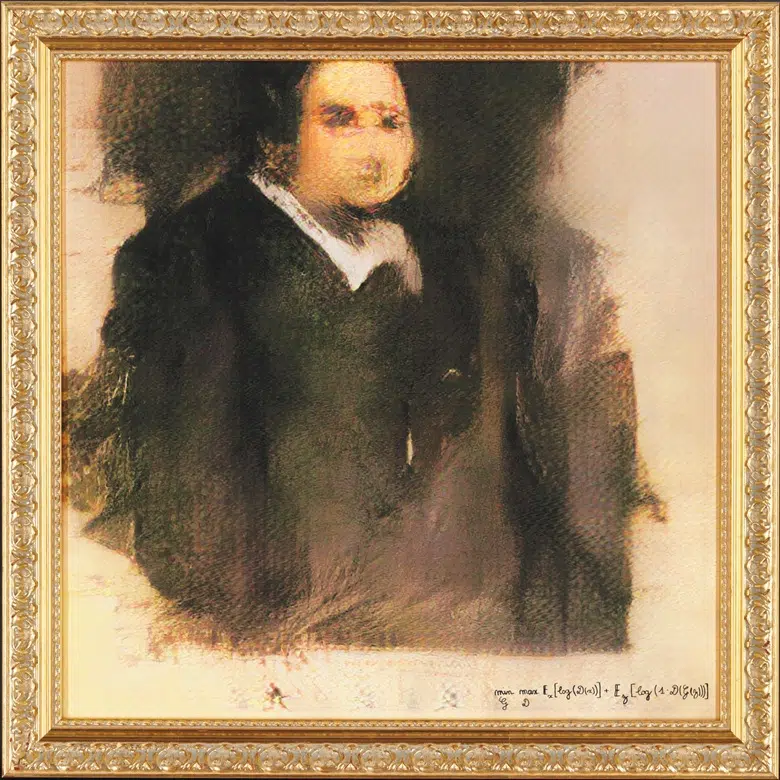
Obvious used a set of algorithms to create their artwork that goes by the acronym GAN, which stands for “generative adversarial network” and was created in 2014 by Ian Goodfellow, a computer scientist, engineer, and executive.
AI-generated art is created by machine learning using advanced algorithms, more specifically a string of words typed as a prompt into the AI-art generating application. Once the prompt is entered, the creator hits “enter” sending the string of words into the application to be synthesized into something that never existed.
The text prompt words are like magic and what is produced is AI-generated art. Some call it art, others don’t think of it as art at all, but we will explore that later on.
Each time the creator enters a string of words (even the exact same words), they will invariably get a completely different and unexpected result every time. It is unpredictable and exciting.
It is also addicting since it can create dopamine rushes for some people – similar to gambling. So this is something to just keep in your mind and be aware of.
Since each word that is typed into the AI-generating application’s prompt area affects the outcome, changing one word in a string of words will automatically change the outcome. An example prompt is below with the final artwork produced as a result of that prompt which was entered using Midjourney.


AI-Generated Art is Unnerving And Exciting
As someone who paints portraits both traditionally and digitally, the time invested can take 20-60 hours depending on the size and medium.
If I may be straightforward, it rubs me the wrong way that my cousin’s boyfriend’s daughter who is 13 can type a couple of words as a prompt into an AI application, push a button with her little hand, and out pops some magical artwork.
Not just any artwork, but art that could be framed and put on a wall next to other traditional or digital pieces of artwork and no one would know otherwise.
Of course, there are artists and other people out there knee-deep in detective trying to spot and call out AI-generated art pieces, but for the average eye – you might miss it and not even notice that the work that you are looking at is generated by AI technology.
That in and of itself is unnerving for artists, creatives, and industries that AI-generated art will undoubtedly affect in some capacity.
Yet, it is always exciting to explore what technology comes up with next. The feelings and opinions about AI-generated will be based on people’s perceptions and experiences just like any technology or innovation.
This is open for discussion and debate and I am looking forward to it.
Why is AI-Generated Art So Controversial?
AI-generated art is controversial and for good reason, just like any other AI application, it changes the landscape for various people with their passions and jobs.
For example, there are AI-writing generators like Jasper and Copy.ai as well as Socratic by Google, an AI-enabled software that helps kids with arithmetic and other projects.
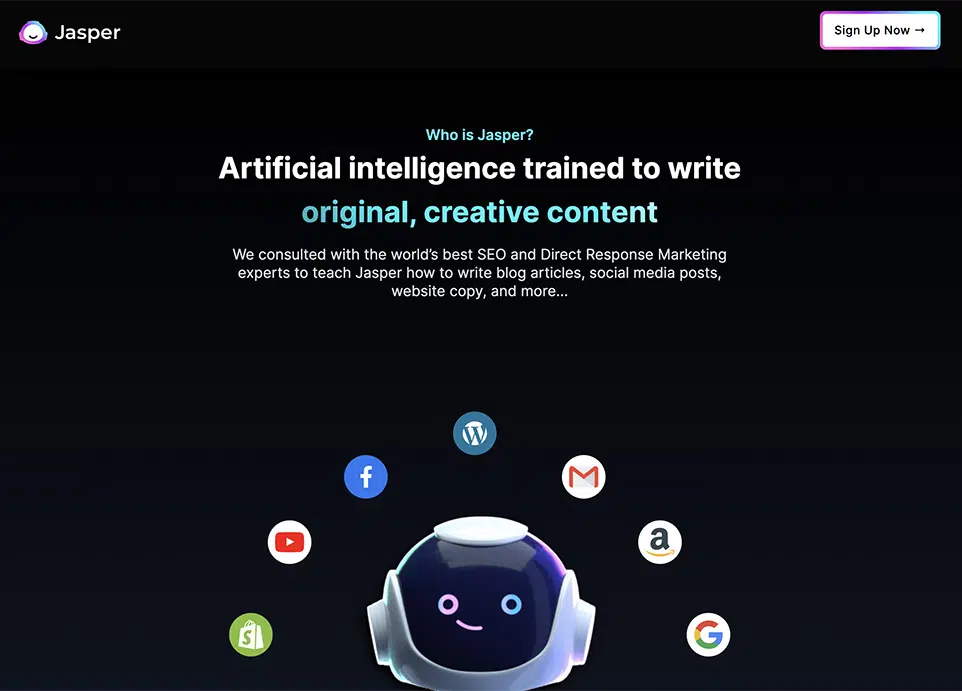
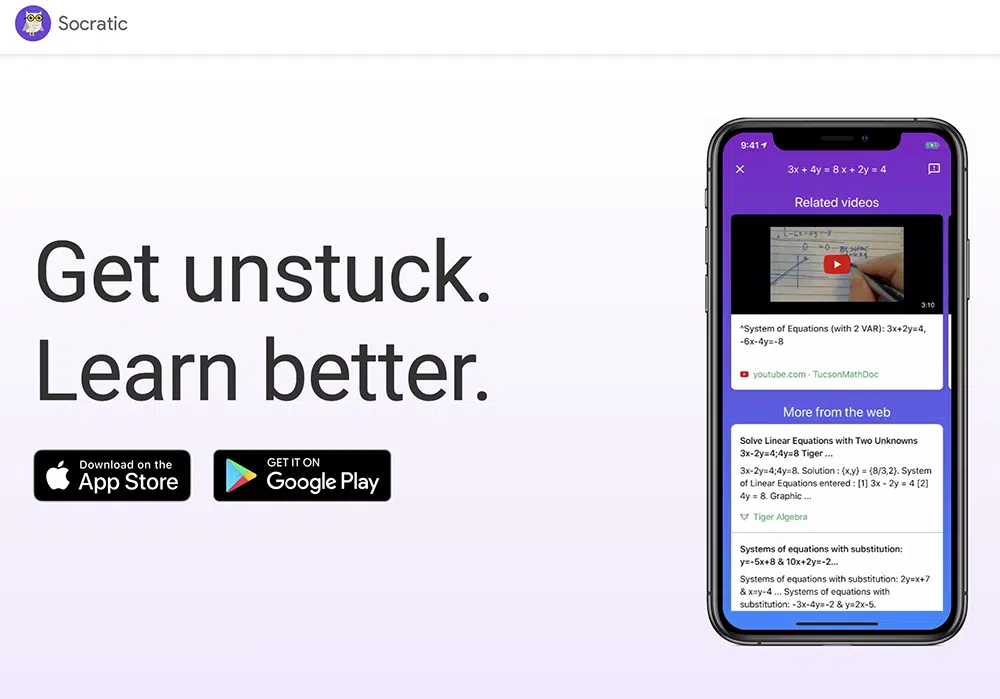
Does that mean we don’t need people anymore to write blog content or copy for various projects anymore? Does that mean that children do not need real human tutors?
No, there will always be a place for copy written by humans – just like this blog, as well as tutors and artists of all kinds.
How to Avoid Plagiarism From AI Copywriting Tools
A quick way to check if your copy is heavily written by AI is by using plagiarism-checking software. See the two below:
- Originality.AI is for serious publishers and it will put you in control of checking your content’s originality by identifying any plagiarism and detecting if AI tools were used to create the content. Their rate is $0.01 per credit, and 1 credit scans 100 words.
- Qutext is another option and it will let you check a text only once a day, and if you want to do it more often for yourself or to check others’ work, check out their pricing.
Why Are Artists And Those In Creative Fields Worried About AI-Generated Art?
Specifically for AI-generated art, numerous people believe that typing words into an app and pushing a button to create art is essentially cheating, while others think it is the most magical thing that has ever happened to them and they can’t get enough.
People are calling themselves AI artists and they believe it to their core, while others, especially traditional and digital artists, are calling the self-proclaimed AI-artists hacks. The polarity is strong on both sides. Yet both non-artists and artists are using this technology.

According to the recent New York Times Article “An A.I.-Generated Picture Won an Art Prize. Artists Aren’t Happy,” we are learning that AI-generated art will be hard to avoid and will challenge our perceptions of art.
Even the creator of the award-winning artwork “Théâtre D’opéra Spatia”, Jason M. Allen, who used Midjourney to create the work stated, “I won, and I didn’t break any rules.” Which essentially is true, even if it did cause quite the uproar.
We are always debating what art is and what art is not. For example in 2019, Italian conceptual artist Maurizio Cattelan taped a banana to a wall, and titled it “Comedian” at Art Basel Miami Beach. It went viral and sold for $120,000.
AI-generated art, the banana as well as many other mediums, presentations, applications, and exhibitions of work will always be debated.
Truth is – it does not matter what side you stand on for AI-generated art, it is not going anywhere. If anything, is it becoming integrated into artwork, design, website development, concept art, galleries, museums, and storyboards to name a few.
Artists VS Non-Artists
Saying someone is an artist is subjective, but for the sake of argument in this article, we will refer to those that are artists as anyone who created art digitally or traditionally before AI-generated art became a worldwide controversy and focus.
Those who are referred to as non-artists are those who became artists only due to working with AI-generated art tools to create works.
Yes, this line between the two is a little gray like so much of this subject, and there are arguments here to be had, but for simplicity let’s draw this line in the sand so we can discuss this a little easier.
While exploring various AI Facebook groups, the cannon fodder from non-artists to artists is pretty brutal.
Many people who have learned to create AI-Generated art have never actually used a paintbrush, Procreate, or Photoshop for that matter, but are selling their works, taking on commissions, and building up Instagram accounts in the hundreds of thousands overnight.

When artists share how hard it is on them, many (not all) start calling the artists babies and for them to get over it. Artists are calling non-artists a bunch of hacks that are ruining their lives.
Both of these views are valid as well as the hundreds of other opinions on this polarizing topic.
As you are reading this, you might have formed an opinion on the subject of AI-generated art before reading this, and have the same opinion now or have changed your mind. Your opinion is valid either way.

The topic is so new, and fresh, and quite frankly the ebb and flow of what it can do and how people are perceiving it and forming opinions are moving at the speed of light. It is hard to not have various opinions on this matter, even polarizing ones in your head and heart.
I love it and hate it myself. It’s a strange kind of relationship, but I know it is not going anywhere so I am finding ways to embrace it and I encourage you to do the same in the best way possible for you.
I am not saying follow the masses and accept what is – what I am saying is that it is here to stay, evolve, and integrate into the general creative realm we all play in – no matter how much you may dislike it.
So use it to your advantage or at least consider the possibilities.
A Large Pain Point Is AI-Generated Art’s Plagiarism Issues
One of the largest pain points for artists and those who have moral convictions about copyrights is how the AI-generating software creates its final product that is considered art.
Copyright, a form of intellectual property law, protects original works of authorship including literary, dramatic, musical, and artistic works, such as poetry, novels, movies, songs, computer software, and architecture.
The final images that are created in programs like Midjourney are derived from other copyrighted images (as well as public domain imagery), yet, it is remixed into oblivion. This means that the artwork of artists, photographers of photographers, and work of designers are being pulled into the pool.
Even if the final outcome is a remix of hundreds of copyrighted and public domain images which do not call back easily to the originators of the materials used to create the output – is it in fact plagiarism?
Some would argue yes while others have argued no. This is a pain point that has quite a lot of gray area that is still up for debate.
Just an AI side note, there are AI plagiarism detectors like Originality.ai which focuses on writing not art. This is another way AI is being integrated into our world.
Yet, just knowing that a bunch of legally copyrighted content is being thrown into a pool to be remixed upsets many people, especially those that are copyright holders or original creators.
However, there is no way currently to trace the AI-generated artwork back to its origins which is good and bad. The good news is that it is so vastly different that it would not hold up in court at the time of writing this. The bad news is that it is still so vastly different that it would not hold up in court at the time of writing this.
See what I am saying here?
Beyond opinion is a strong moral debate. Yet, we have had this debate many times before in other art forms such as collage and photography. Where is the line of appropriation drawn if it even applies at all?
This is a conversation that will remain ongoing and hopefully, people will find a resolution to this concern.
What do you think? Is this morally wrong?
Using AI-Art To Your Advantage
As an artist and designer, when I was first introduced to AI-Generated art, my gut reaction was to reject it completely. At first, I thought it was generally interesting as a concept, but I was scared, worried, and unnerved by what AI-generated art could achieve. Truthfully, I was intimidated.
I did not embrace it immediately, it took reading articles like this one, joining Facebook groups, and having discussions with other creators to inform myself so I could make a more educated opinion rather than coming from a reaction standpoint.
I concluded that I wanted to embrace this tool in a new way that can help up my game as a creative because I realized just how much AI was sticking around for the long haul.
I still feel like an old lady wanting to yell “Get off my lawn”, but I also recognize as people we do have to grow and adapt to the ever-changing world – like it or not.
Like it or not, we avoid change and innovation all day long, but just like when the internet started on August 6, 1991, people rejected it because it was scary and new and here we are today 31 years later.
The internet helps us run our world in very useful ways. With anything, there are negative and positive, but finding the good in things we can’t change is a pretty amazing mindset to have.
Why Take Away Someone’s Joy?
As an artist and designer I like to make art, but I know a lot of other people in the world that are not very creative digging this new technology because it provides them opportunities to be creative. It is a way to express themselves in ways they could not before
Although my art has won awards and been in galleries and museums, I did art first and foremost for survival and to process the challenging parts of my life, like my childhood and chronic illness turned into a disability.
I will be the first to champion anyone to make things and not even be good at it. Just make art and do creative things because it is healthy. People will hate on groups of people going to wine bars to paint together and drink wine – but why do we care?
These people are not trying to be professional artists but maybe someday they will fall so in love with the creative process and they will try to move into professional art. More power to them and hope they do. There’s room for everyone in my book.
Personally, I am not interested in typing words into an AI-Art Generator, pushing a button, and sharing the results as my next masterpiece on my Facebook or IG, but others will and I can’t stop them, and why should i?
Does that drive me a little mad, of course, I would be lying if I said no. Yet, in my deepest understanding of the creative process, I want to welcome anyone into the space that wants to join. I am a team player.
It Is Said That AI-Generated Art Hurts Artists And Creatives.
If someone gets joy out of something it is really none of my business unless it involves hurting others. I know many people will say, “Well, AI-Generated art hurts artists, and creative people are losing jobs and other work over it.”
The truth is, you’re right to some degree, and with everything that progresses with technology this happens to be the case. Grocery stores create self-checkouts and they need fewer cashiers.
You can cash a check through an app on your phone which means there is less work for tellers and the stories go on and on. In the early stages of anything, we do not know how things will evolve and to what extent.
As much as this can be a challenge to human beings just trying to make a living, artists included, there is nothing we can do to stop it from happening and that is the burn. That is the reality.
In life, one of the best ways to live a long life and not be so stressed is to be adaptable, and flexible, and understand that if you can’t change something you don’t like – don’t waste your energy on it. Ignore it, embrace it or move on.
This is one of those times to really evaluate where you are on this topic, be open to hearing others’ opinions and form your own. Whatever you do, don’t go around hating others. That time could be spent creating something amazing – your way!
Stay in your own playground and let people live their lives.
How I Use AI-Generated Art As An Artist And Designer?
So, no, I am not typing, pushing buttons, and calling my work a masterpiece and I am surely not judging others that do.
What I will do is use this to create faces, bodies, concepts, backgrounds, and pieces and parts that I can put together to create my own composition to then paint.
It’s not much different than those of us that create Pinterest mood boards to build on a concept to paint, draw or build upon and scroll through hours of stock photos to find the perfect model or face.
As I opened up to the potential of how it can aid me as a creative as well as a designer -my mind went wild with the new tool I had in my hands. This will not be my enemy, it will be another tool to make epic art, designs, website layouts and so much more.
I am not limited and neither are you.
A Personal Viewpoint From A Professional Artist And Designer
From a personal point of view, I am a professional digital artist (not traditional, due to severe allergies to all mediums) that has been showing in galleries and museums since 2005.
When submitting to galleries back then, I was rejected 95% of the time because they did not consider digital art to be art at all. Furthermore, on most websites where they housed submission guidelines – it was often said in big bold letters “NO DIGITAL ART”.
These days, a great many traditional artists I know use Photoshop or Procreate for building concepts, color plates, mood boards or even painting their whole creation from start to finish. It has given all artists another tool to enjoy and explore their creative process.
The interesting thing is that something new is creeping into the art world and stirring it up is not new. This happened with digital art and even photography. Traditional painters would hate on photographers like it was their part-time job.
The world’s first photograph that was taken by a camera was in 1826 by Joseph Nicéphore Niépce and today photography is considered one of the finest arts. There are even museums dedicated one hundred percent to photography.
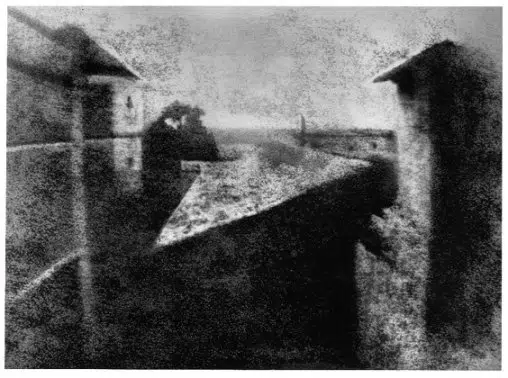
Same with graphic design, pre-computer it was done very differently and one hundred percent manually. Graphic designers had to cut, copy and paste everything with their own hands and they used things like drawing tables, adhesive wax, rubber cement, technical pens, exacto knives, rulers and more.
The job was much harder before the mid-90’s when computers were introduced into the field. People back then knew they would be out of a job if they did not adapt to the new way of doing graphic design with computers, it did not stop us from being where we are today.
Today graphic designers use Adobe Photoshop, InDesign and Illustrator or other software like Procreate to do their job. This is an example of technology changing a field and actually making it a lot easier on designers in that industry.
As human beings, we like to reject the things we do not understand, but there comes a point in evolution that things will change and you either adapt or perish.
Of course, you are not going to perish if you don’t fully embrace AI-generated art, but wasting time hoping it goes away is futile. Using it to your advantage is genius.
Can I Make AI-Generated Art? Yes.
Yes, absolutely. My favorite app at the time of writing this is Midjourney. Since so many platforms are new and in their infancy, that might change, but Midjourney is my go-to.
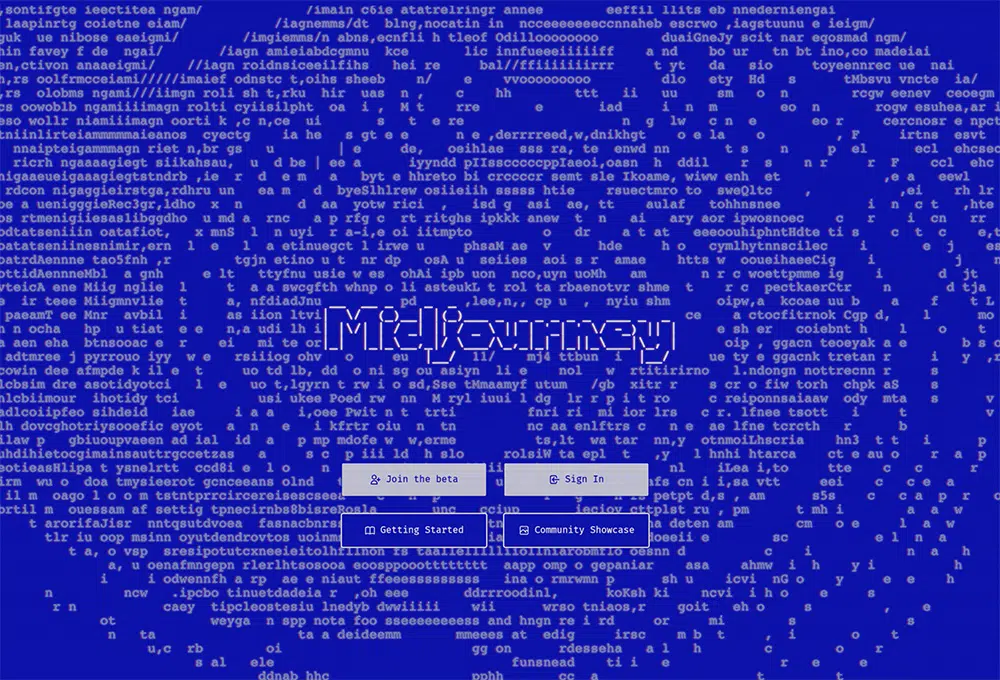
Midjourney launched a 24 hours beta on July 18 2022 and finally, at the end of July, David Holz, Midjourney’s founder shared that “Midjourney beta is now open to everyone.” This open invitation did not disappoint.
If you want to join Midjourney, you will first need a Discord account. Discord is a free communication app that you can run on your desktop or mobile device.
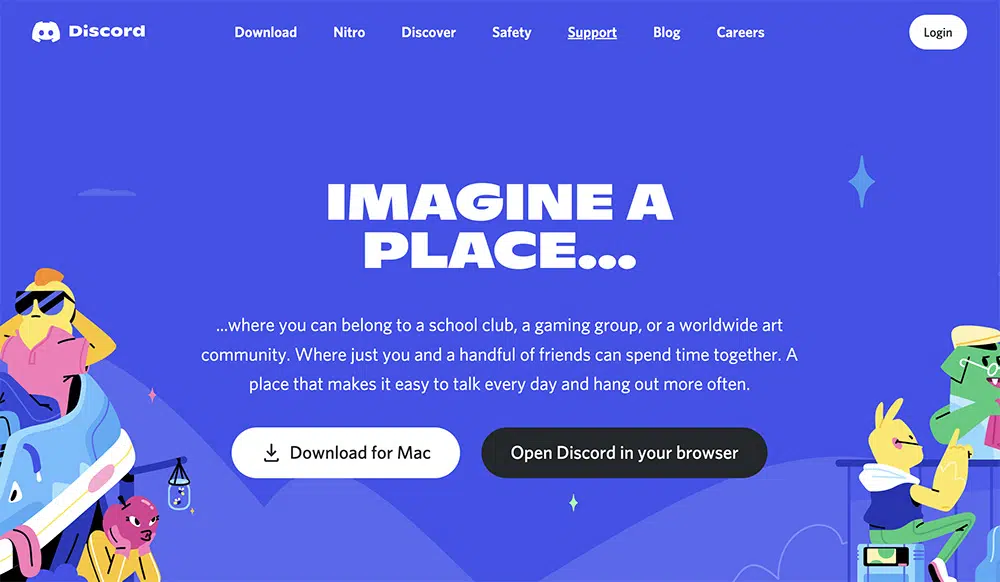
You can start a free trial but there are also paid options. For now, beta users will receive about 25 free images as part of the Midjourney beta.
After that, you’ll have to pay either $10/mo for 200 images per month or a standard membership of $30 per month for unlimited use.

Midjourney will allow corporate use of the generated images for a special enterprise membership.
If you want to try out Midjourney, here are some quick and fast directions:
- Go to midjourney.com. Click: Join Beta Button
- Sign Into Discord Account or Create New Account
- Accept Discord invite.
- Link to Midjourney when prompted.
- Welcome to Midjourney beta.
Now that you have signed on, most people are confused about what to do next. Look over on the left side of your Discord Midjourney (not the Midjourney.com website) channel’s page and find where it says “Newbie” with a number following it. Images before for reference.

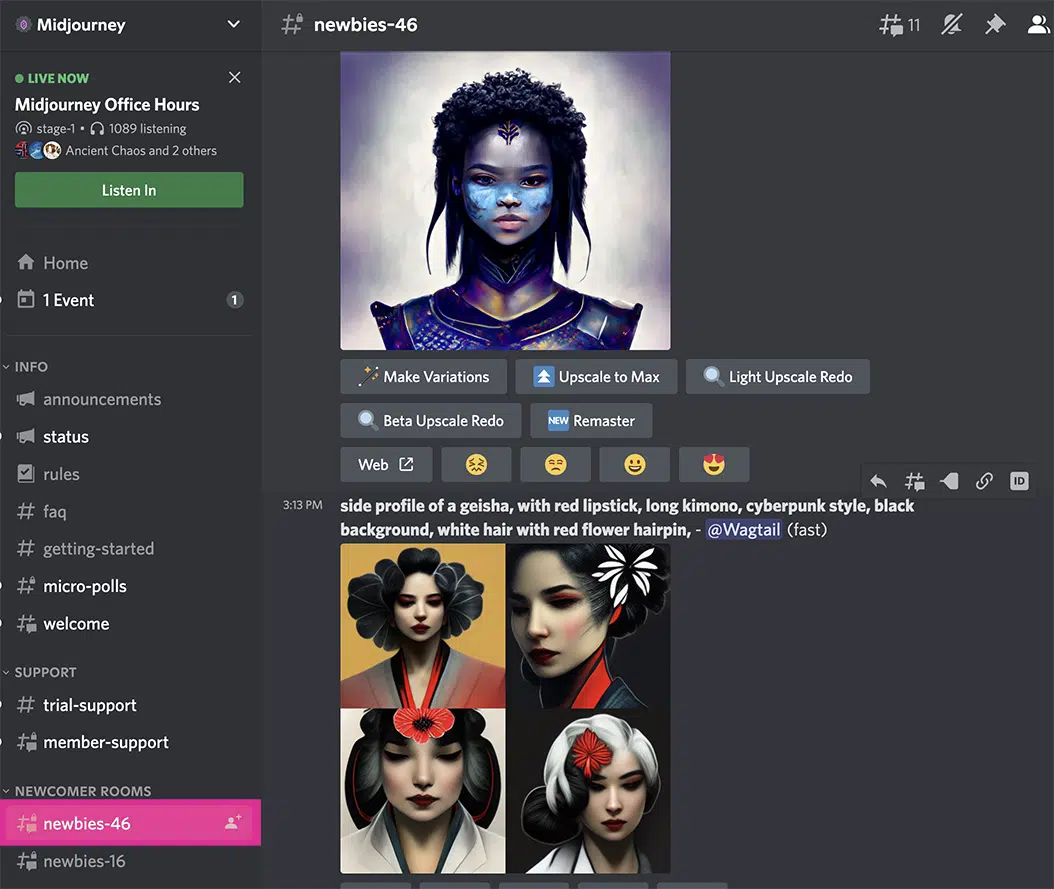
Once you are in the “Newbie” you will see artwork that has been prompted by other users. The newbie channels often move really fast and you can watch brand new pieces of art be realized in real time.
If you want to give it a try, type in the input area below and start your prompt. You start a prompt by typing “/imagine”, hitting enter and then following it with a string of words and inspiration.
Examples of Prompts
Copyrighting AI-Generated Art Is Challenging
The U.S. Copyright Office (USCO) states that there is not a place yet for AI-generated art in copyright laws. AI-generated art goes against the basic tenets of copyright law, which suggest that the work must be the product of a human mind – meaning it can only be granted to humans.
Each AI application and program has different views on the final output and who owns it. For example, if you are using a free or a trial account for Midjourney, you are granted a Commons Noncommercial 4.0 Attribution International License, meaning you can’t sell the work and you give credit (“attribution”) to Midjourney.
If you pay for your account, “You own all Assets”, but you give MidJourney the “perpetual, worldwide, non-exclusive, sublicensable no-charge, royalty-free, irrevocable copyright license to reproduce, prepare Derivative Works of, publicly display, publicly perform, sublicense, and distribute text, and image prompts you input into the Services or Assets produced by the service at your direction.”
You can look further at Midjourney’s “Terms of Use” to get into more details.
In short, you own the rights to the work, but Midjourney also owns it. It is currently still a sticky siltation.
Art In A Public Pool
While doing prompts, all artworks that you are creating go into a public pool which then can be used by others. The way to avoid that is to pay an extra $20 for privacy where you can prompt the Midjourney Bot privately so no one can see what you are doing.
If you do decide to sign up and make your account private, make sure that on your Midjourney account page Midjourney.com/app that you toggle all the “eyes” to close so that they are not shown on your feed.
Can I Make AI Art Into An NFT?
Again, this is a sticky situation and it depends on the platform that you are using. With Midjourney, currently, you can but you have to pay a big fee to do so. You need to become a “corporate subscriber” and in the second instance, you need to pay a 20% fee on the sale of the NFT to Midjourney. Corporate membership plans involve an upfront, non-refundable deposit for up to 12 months of service.
It is True That AI-Generated Art Is Changing The World OF Art And Design
Ai-Generated art is changing the landscape of art and design in a big way and in ways we have yet to comprehend. The landscape is scary and uncertain for some, while others embrace it with excitement and wonder. Like all technology, there will be controversy, questions and ever-changing opinions that will morph just like technology does over time.
Art and design are most likely one of the last things that may come to mind for many people as well as they are fairly subjective topics. However, whether creative by profession or by simple entertainment, the bridge between the two worlds becomes a little closer thanks to artificial intelligence.
—
About the author: Aunia Kahn is an internationally awarded fine artist, web and graphic designer, and digital marker. She is the owner of Rise Visible and has been passionately working in the industry since 1998. As a content writer, her contributions are focused on innovative technologies, women in STEM, and disability visibility in business.

